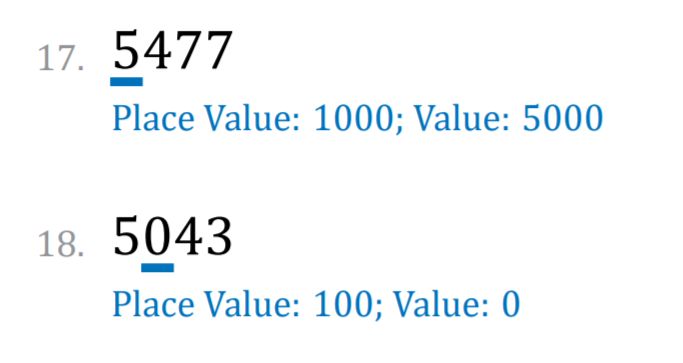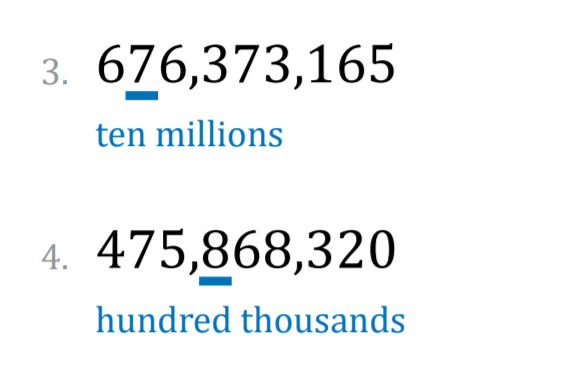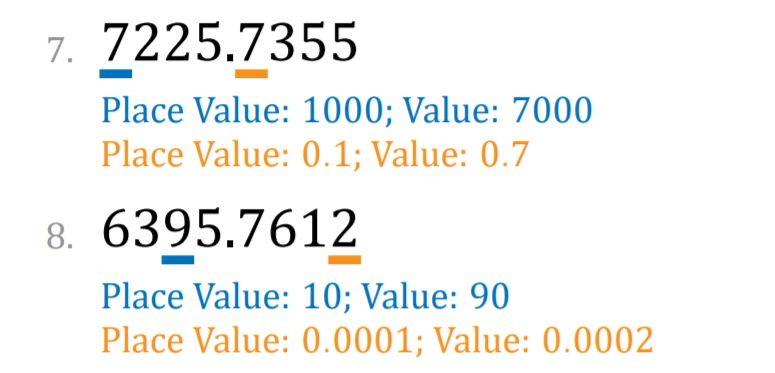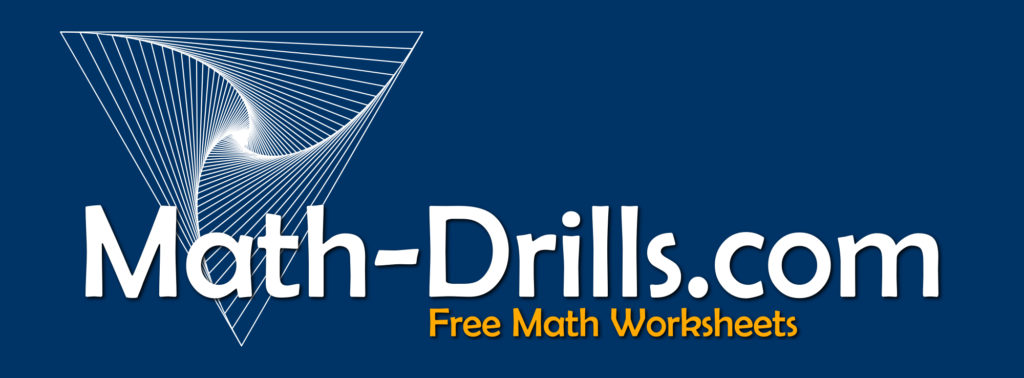Having a good understanding of place and place value in numbers allows students to complete more complex math skills that rely on place value such as sorting and ordering numbers, addition and subtraction, and multiplication and division.
Two types of Place Value Math Worksheets were recently updated: Identifying place only and Determining place and digit values. The revised worksheets now include name and date fields, a better balance of all places covered on each worksheet and multiple places to value in the case of the decimal versions. If, for example, you use a worksheet that covers the places from ones to millions, and there are 20 questions on the page, each place will show up on the page at least twice and most places will show up three times. On the decimal versions, students are asked to value two places: one before the decimal and one after the decimal.
As there are different number formats around the world, there are three number formats used: U.S., S.I. (commonly used in Canada), and a European format version with commas for decimals. If you visit the place value worksheets page, each section is clearly marked, so it should be easy to get the number format that you want.
Sample Questions

In the first set of sample questions, students are asked the place value and the value of each underlined digit. In question 17, the underlined digit is in the thousands place, so the place value is 1000. Since the digit 5 is in the thousands place, the value of that digit is 5 x 1000 = 5000.
Question 18 is interesting as the place value is 100 as it is the hundreds place, but since there is a 0 in that place, the value of the digit is zero. Versions of this worksheet start at hundreds (three-digit numbers) and go up to hundred millions (nine-digit numbers).

In the second set of questions, students are asked to identify the place (only) of each underlined digit. For some students this might not be a step that they need, but it wouldn’t hurt to practice identifying place for most students.
The two questions have a different place underlined, and students just have to determine what place that is and write the name of the place underneath. Versions of this worksheet start at three-digit numbers (to hundreds) and go up to nine-digit number (to hundred millions) as in the example questions shown here.

The final set of questions is similar to the first set, but with decimal places. For these worksheets, both a whole number and a decimal place value are underlined. If students are already familiar with whole number place values, they can practice or skip that aspect.
The example questions include four places before and four places after the decimal. The versions on the website go from two before and two after to seven before and seven after, so there are many options.

